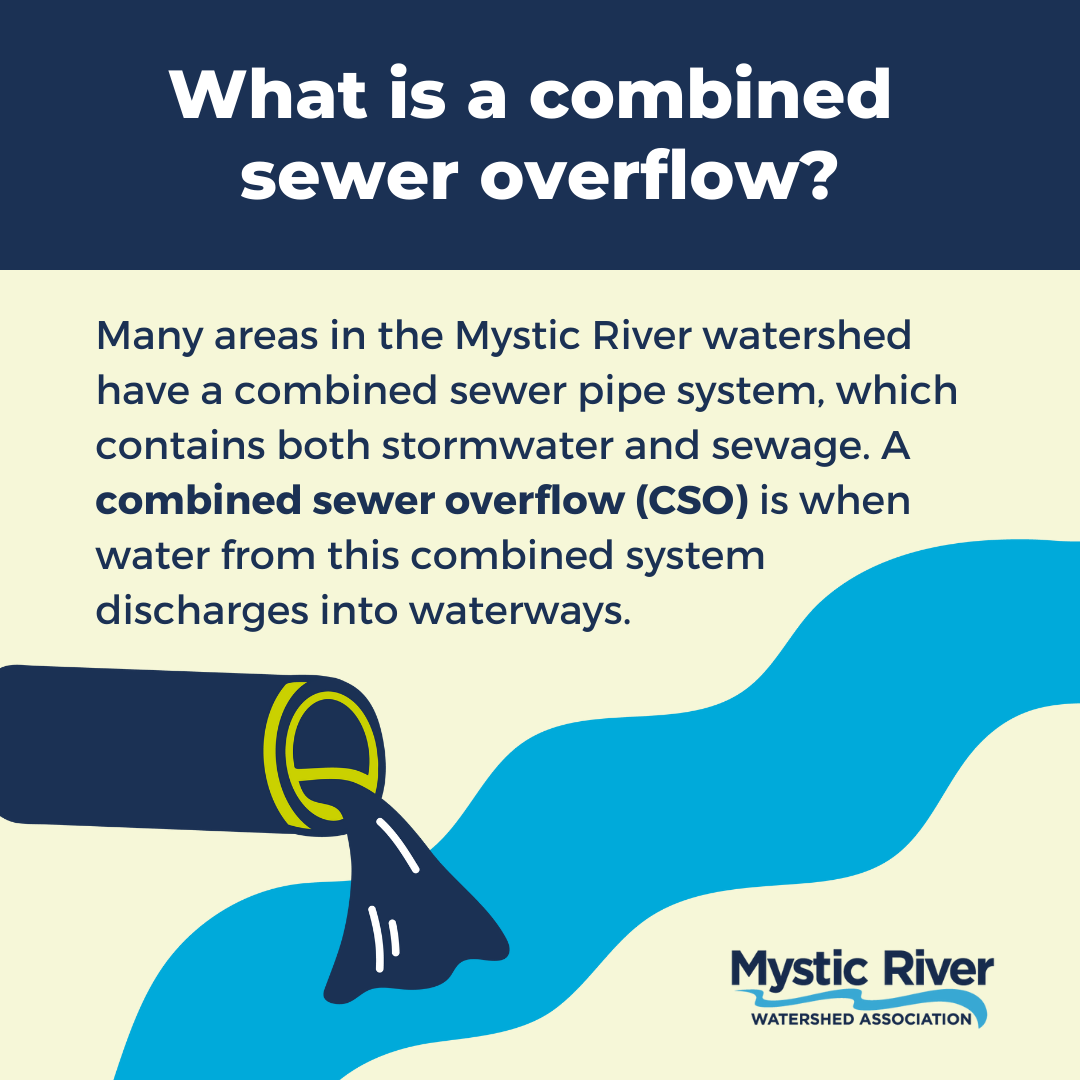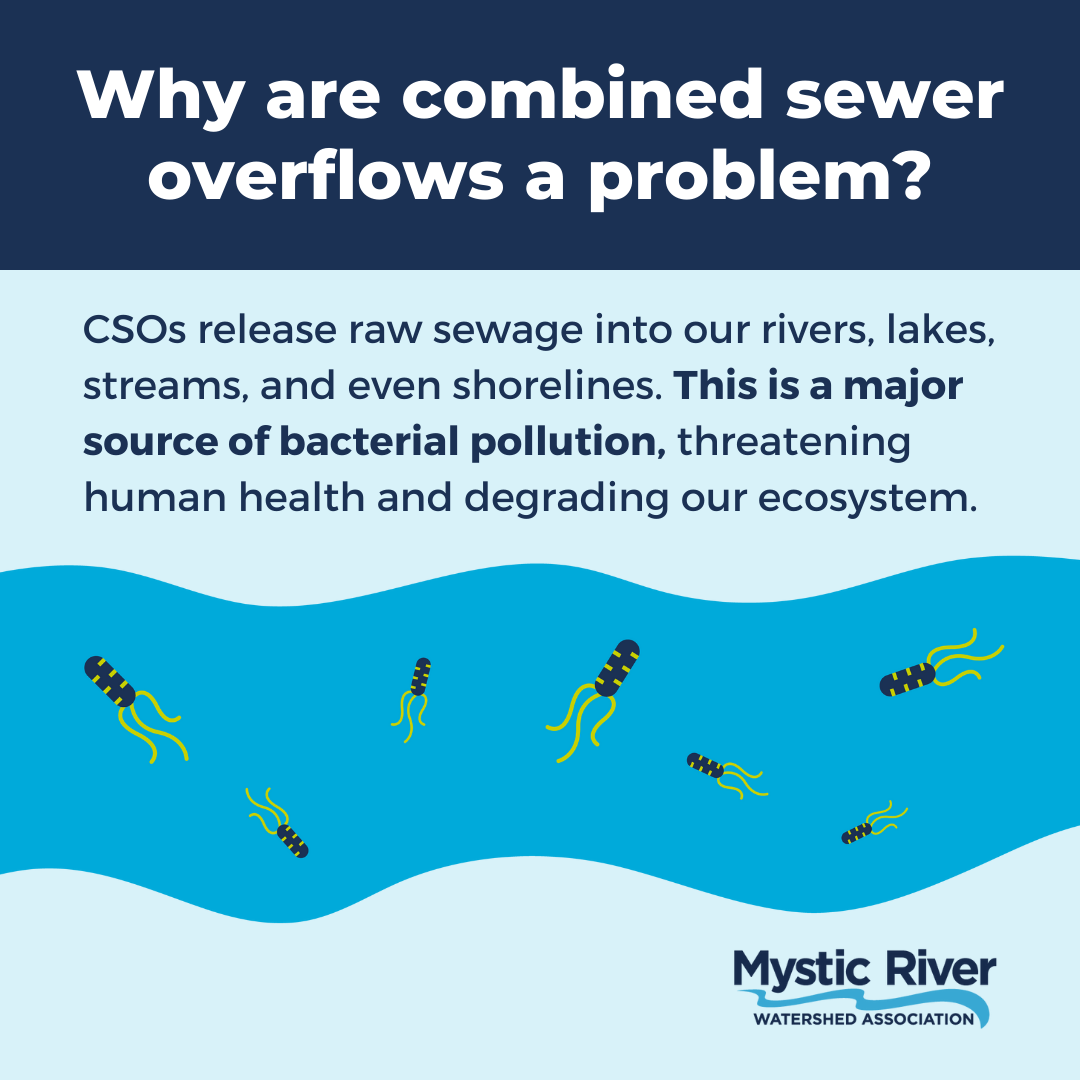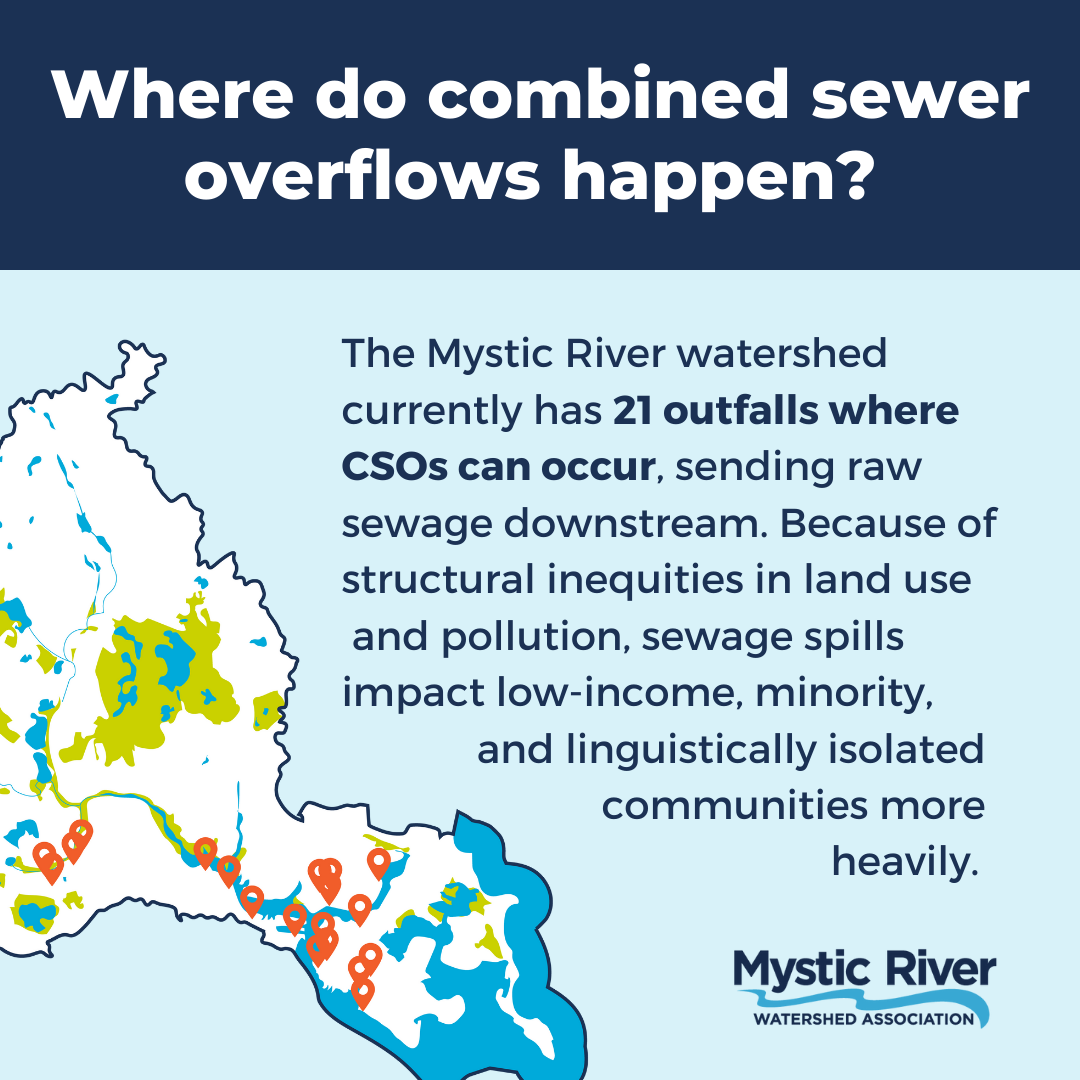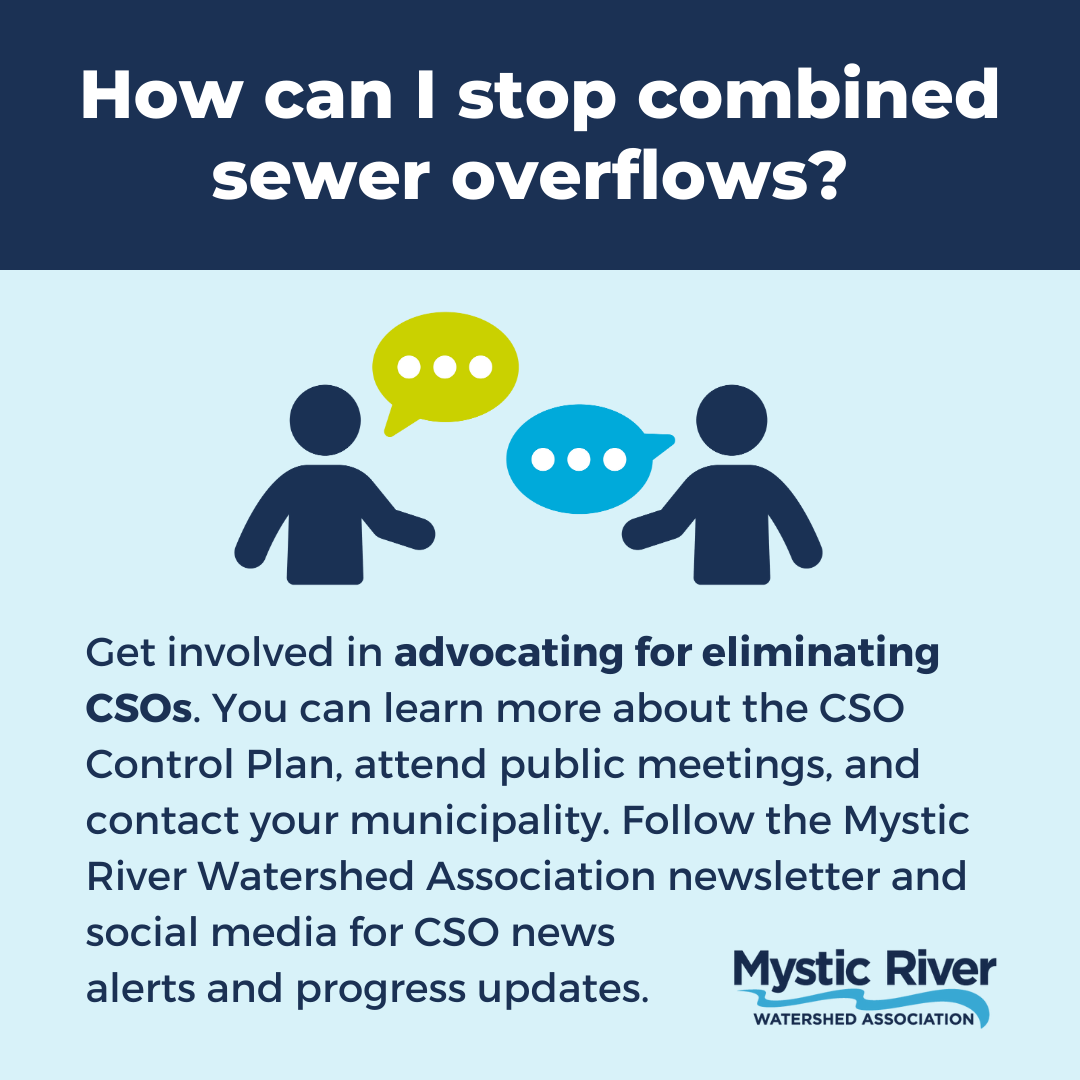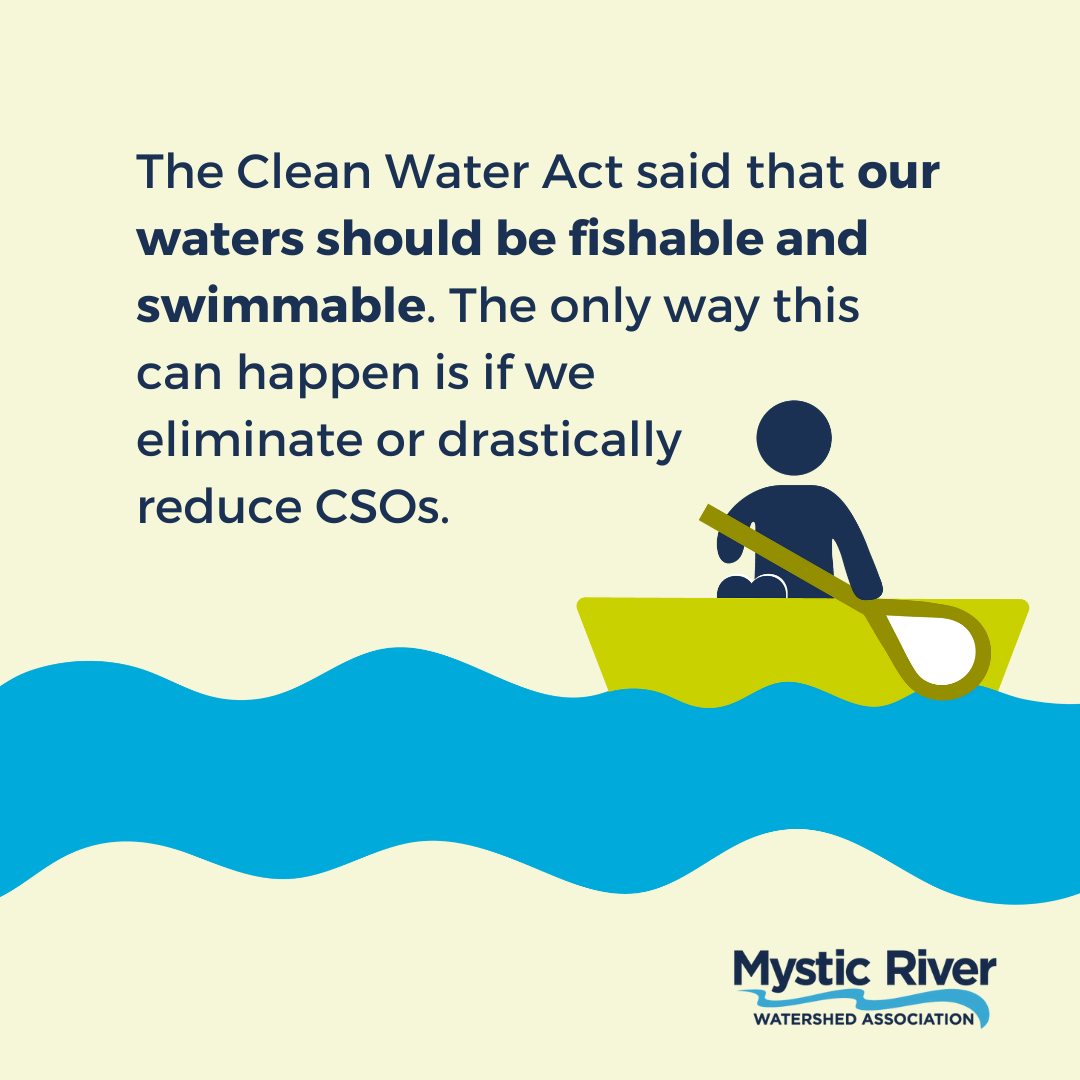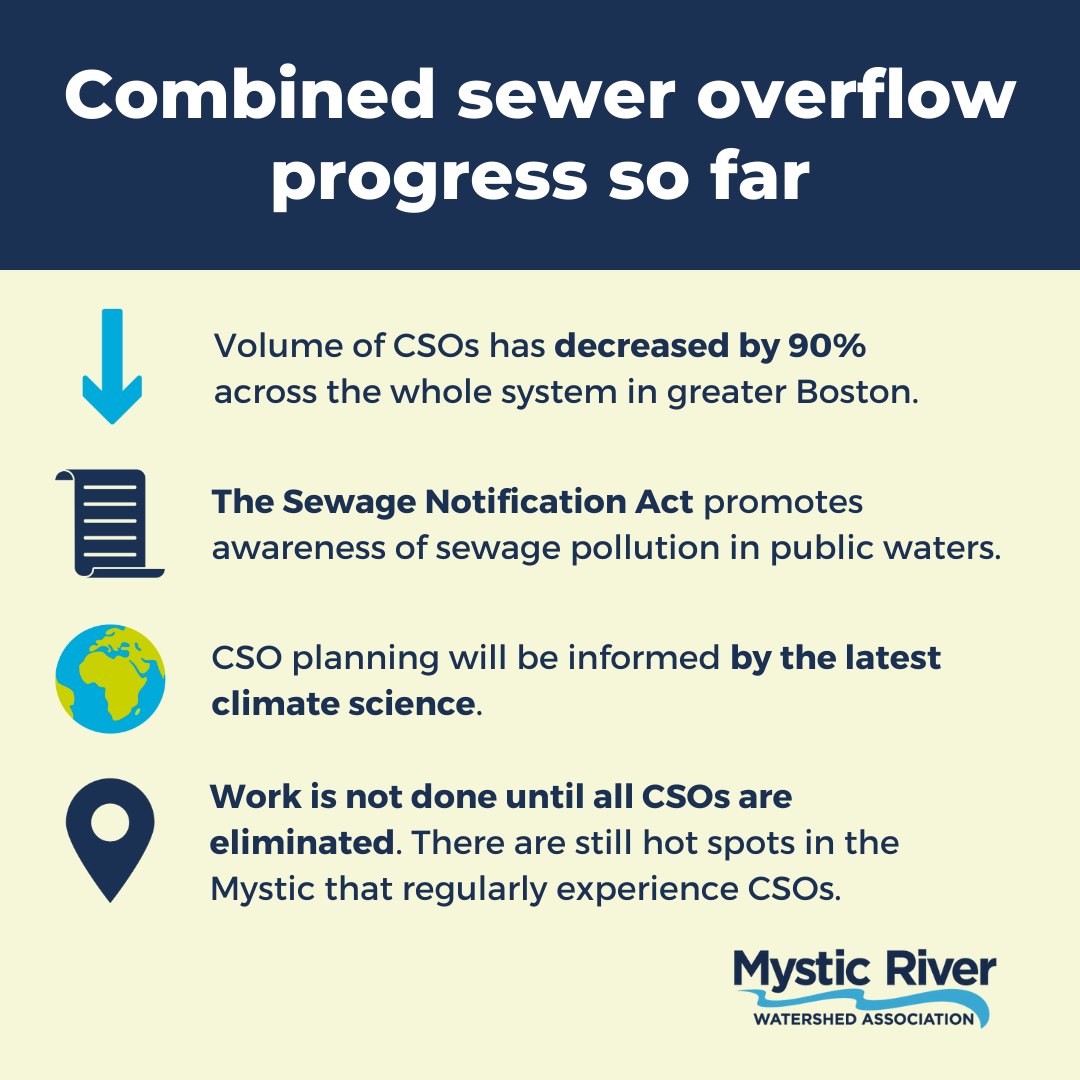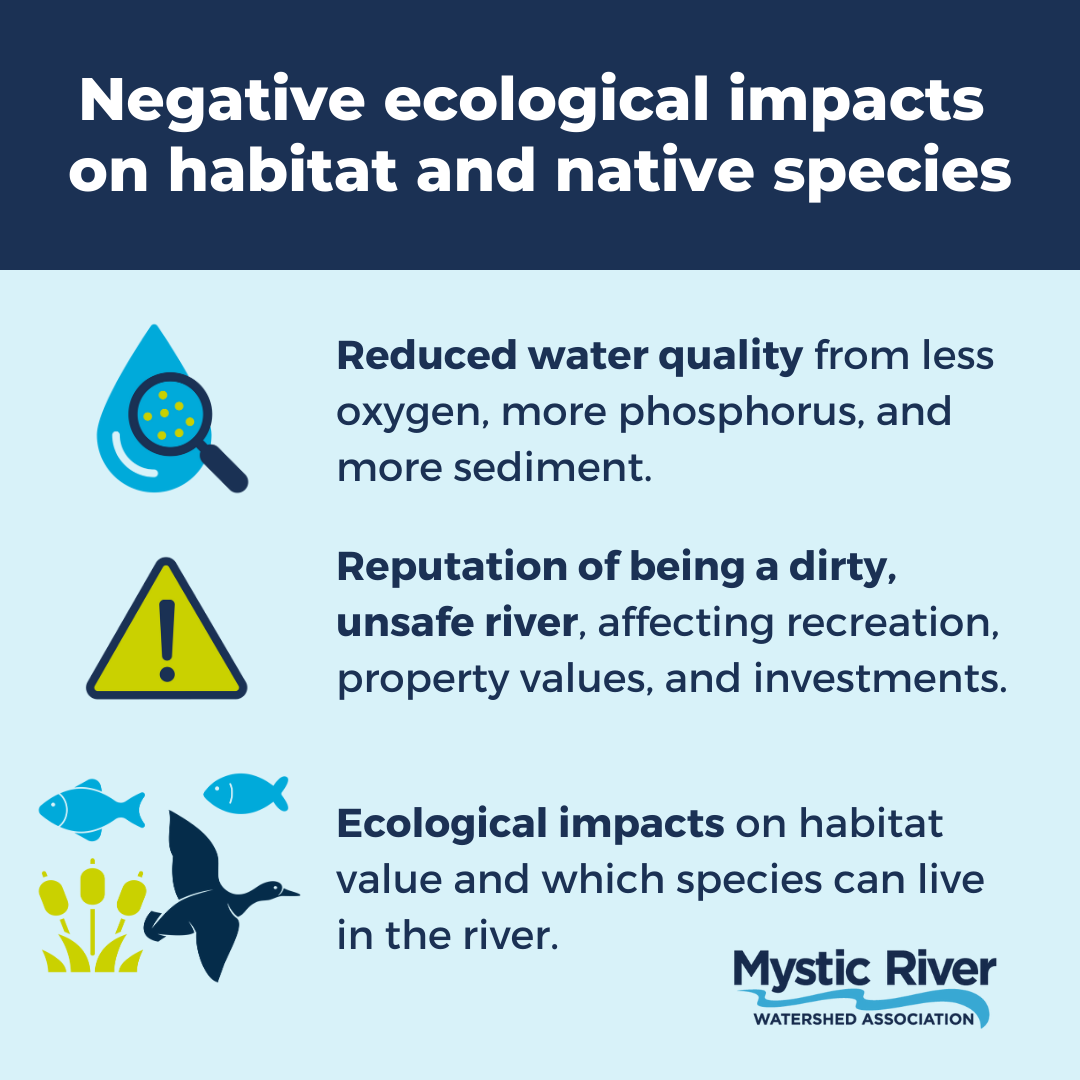Pollution
The Mystic River—like many urban rivers around the country—is cleaner today than in the last century thanks to the Clean Water Act. But our work is not yet done. As the most urbanized watershed in New England, the Mystic River watershed is especially subject to stormwater pollution. It also has 21 combined sewer systems—that can dump raw sewage into waterways after a heavy rain. As with many environmental issues—we are seeing our most vulnerable populations and BIPOC residents being most negatively impacted.
Credit: Margaret Walsh
Combined Sewer Overflows
Many areas in the Mystic River watershed have combined sewer pipe system, which contains both stormwater and sewage. A combined sewer overflow (CSO) is when water from this combined system is discharged into waterways.
During dry weather or moderate rain, the combined stormwater and sewer pipe deliver the flow to the treatment plant. When heavy rainfall overwhelms the combined system, CSOs occur to divert the flow into nearby rivers so that it doesn’t back up into people’s homes.
Currently, there 21 outfalls along the Alewife Brook, Mystic River and Chelsea River. Annual discharges from CSOs— although much reduced— are still measured in the millions of gallons—which is dangerous to people, habitat, and wildlife. Because of structural inequities in land use and pollution, sewage spills impact low-income, minority, and linguistically isolated communities more heavily. The map shows currently active CSOs and ones that have been eliminated.
The Massachusetts Water Resource Authority is working to eliminate CSOs, and to keep the public informed when CSOs happen. You can sign up for notifications or read about overflows in Boston, Cambridge, Chelsea and Somerville.
Stormwater Pollution
“Stormwater” is a fancy word for rain or snowmelt. “Stormwater runoff” occurs when rain flows over land–driveways, lawn and streets–into the nearest storm drains and catch basins and then discharges directly into our water bodies through pipes in the network of stormwater pipes–WITHOUT being treated.
Stormwater pollution happens when the water picks up pollutants such as car oil, dog waste, excess fertilizer, herbicides, and pesticides on lawns, salt and de-icing materials, cigarette butts, and other trash. These pollutants go down the nearest catch basin and end up in our lakes, rivers and streams.
In addition to polluting the water, stormwater can cause flooding, sewage backups, and erosion. As more and more open space land is developed and covered by impervious surfaces (surfaces where water cannot penetrate), stormwater cannot infiltrate into the ground and is forced to become runoff.
The more urban communities—those that have less open space and high amount of development and paving—are disproportionately impacted by stormwater pollution.
Cities and towns work to limit the amount of pollutants that make their way into water bodies—through such activities as expanded streetsweeping, green infrastructure improvements—like rain gardens and trenches—or separating sewer and stormwater lines.
Learn more about the stormwater—including what our cities and towns are doing and how you can help!

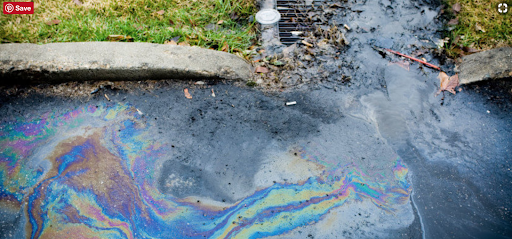

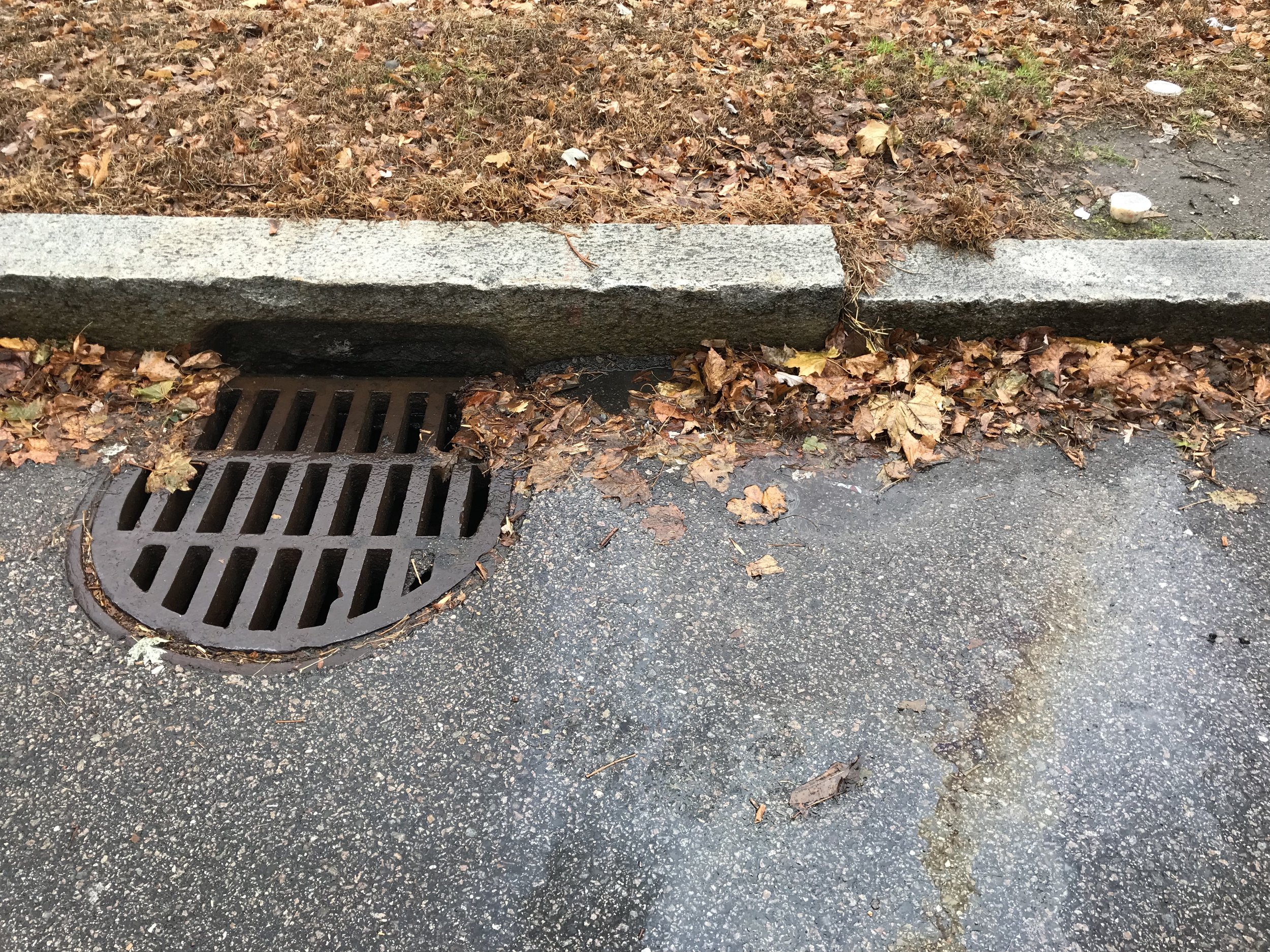
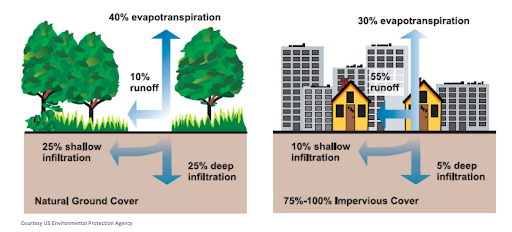
pollutants
Explore the links to learn more about these main groups of contaminants on the watershed.
Water Quality on the Mystic
Every year MyRWA, together with the US Environmental Protection Agency (EPA), issues a yearly water quality report card for the Mystic River watershed. Baseline bacteria data is used as the basis for this annual water quality report card. The grade is based on how frequently waterbodies meet bacteria standards for swimming and boating. The report shows there are many places to go boating and swimming on the Mystic—earning “A” and “B” grades! The grade also shows that much work lies ahead in realizing the promise of the Clean Water Act in many of our waterbodies—especially smaller tributaries and water bodies in environmental justice neighborhoods. Read our Watershed Scientists reflections on our annual report card and the importance of water quality testing.


